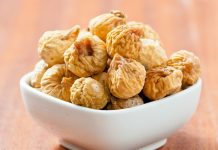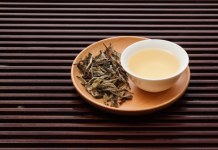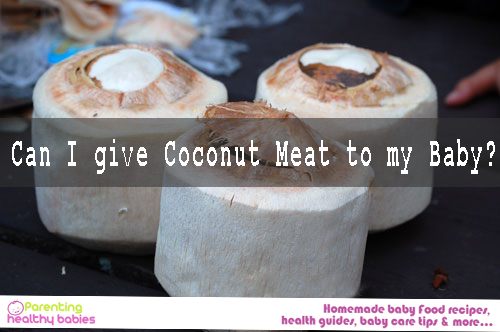Consuming Quince can treat all kinds of ulcers and almost all stomach ailments. It lowers blood pressure, good for stress and cholesterol Levels, rich in anti-inflammatory properties, helps treat liver and eye problems, good for weight loss and nausea.
Quince is a fruit native to several parts of Asia and the Mediterranean. Quince is a seasonal fruit that is available from autumn to winter. It is rarely eaten raw and usually consumed cooked or frozen. Quinces grown in Asia are often softer and, in some regions, is made as a jam. Quince is a good source of A, B and C vitamins.
11 Must-Know Health Benefits of Quince
Quince has so many health benefits that it is almost magical:
Treats all kinds of Ulcers
The phenolics present in the Asian version of quince have been found to be effective in relieving gastric ulcers. Quince juice is also useful for people suffering from gastric ulcers. It also helps in the treatment of peptic ulcers as it soothes the gastrointestinal tract.
Treats almost all Stomach Ailments
Quince is an effective remedy for morning sickness. Quince, when mixed with honey, can help treat various issues like colitis, diarrhea, constipation and intestinal infections. Quince syrup is also used to treat hemorrhoids.
Has quite a few Antioxidant Benefits
The quince fruit boasts of amazing antioxidant properties because of the presence of poly-phenolic compounds. These antioxidants help fight off free radicals present in the body, thus slowing down the aging process, as well as preventing cardiovascular diseases and strokes.
Has Antiviral Properties
Research has shown that quince fruit is rich in anti-viral properties. The phenolics in Chinese quince have strong anti-influenza activity as well as antioxidant properties. It helps protect against viruses, flu, and other viral pathogens.
Lowers Blood Pressure and Stress
There are various antioxidants in quince that help in relieving stress. Quince is also very rich in potassium, which helps keep high blood pressure in check.
Lowers Cholesterol Levels
Regular consumption of the quince fruit helps to lower LDL or bad cholesterol in your blood, keeping the heart functioning and healthy.
Has Anticancer Properties
The antioxidant properties of quince help the body fight against free radicals and can destroy malignant cancer cells. The pulp of the quince fruit contains astringent compounds and these protect your mucous membranes from cancers by sticking to cancer-causing chemicals.
Rich in Anti-inflammatory Properties
Ripe quince is a rich source of Vitamin C, making up nearly 25% of the recommended daily allowance. Vitamin C helps boost immunity, possesses anti-allergenic properties and also aids in the treatment of inflammatory issues. The fruit and seed extract can be used to treat things like atopic dermatitis and cystitis. It can also be used in the food for allergy sufferers.
Helps treat Liver and Eye problems
The regular consumption of quince is good for those suffering from liver and eye complications.
Good for Weight Loss
The quince fruit is super low in calories but high in dietary fiber. A 100 gm serving of fresh raw quince fruit contains 57 calories. It is low in saturated fats, sodium, and cholesterol. All these qualities make it an amazing choice for weight loss and improving your overall health.
Good for nausea
Quince, when baked or boiled, makes an excellent remedy for nausea and vomiting, due to its diuretic and antiviral properties.
Nutritional Value
Quinces contain fiber as well as several essential vitamins and minerals, making it a nutritious addition to almost any diet.
| Principle | Nutrient Value | Percentage of RDA |
| Energy | 57 Kcal | 3% |
| Carbohydrates | 13.81 g | 11% |
| Protein | 0.40 g | <1% |
| Total Fat | 0.10 g | 0.5% |
| Cholesterol | 0 mg | 0% |
| Dietary Fiber | 1.9 g | 4% |
| Vitamins | ||
| Folates | 3 µg | 1% |
| Niacin | 0.200 mg | 1% |
| Pantothenic acid | 0.081 mg | 1.5% |
| Pyridoxine | 0.040 mg | 3% |
| Riboflavin | 0.030 mg | 2% |
| Thiamin | 0.020 mg | 2% |
| Vitamin A | 40 IU | 1% |
| Vitamin C | 15 mg | 25% |
| Vitamin E | 0.12 mg | 1% |
| Vitamin K | 4.5 µg | 4% |
| Electrolytes | ||
| Sodium | 1 mg | 0% |
| Potassium | 119 mg | 2.5% |
| Minerals | ||
| Calcium | 11 mg | 1% |
| Copper | 0.130 mg | 14% |
| Iron | 0.70 mg | 9% |
| Magnesium | 8 mg | 2% |
| Phosphorus | 11 mg | 2% |
| Selenium | 0.6 µg | 1% |
| Zinc | 0.04 mg | <1% |
How can I cook and Eat Quince Fruits?
Quinces can be poached, roasted and stewed. They may seem hard and astringent at first but as they cook, they turn into delicate, pink and sweet delights.
Top 2 Quince recipes
Poached Quince with Quinoa, oat, and Pistachio Crumble
Ingredients
- 2 quinces
- 500ml of water
- 500g of sugar
- 1 pinch of saffron
- 1 cinnamon stick
- 1-star anise
- 1 tsp lemon juice
- 50g of quinoa
- 75g of Oats, gluten-free
- 2 tbsp of pistachio nuts, shelled
- 3 tbsp of maple syrup or honey
- 1 tbsp of coconut oil
Method
- Put the water and sugar into a medium saucepan and bring to the boil. When the sugar has dissolved reduce to a gentle simmer on low heat
- Add the saffron, cinnamon and star anise into the sugar syrup
- Peel and cut the quince into wedges, rub with the lemon juice and place it into the hot syrup. Simmer for 30 to 40 minutes until the quinces are a buttery soft texture. Remove from heat and allow the quince to cool to room temperature.
- Whilst the quince is poaching, grind the quinoa in a high-speed blender. Feel free to supplement with another gluten-free flour of your choice if you prefer
- Preheat the oven to 180°C/gas
- Tip the ground quinoa into a mixing bowl, add the oat flakes, pistachios, maple syrup, and coconut oil. Rub the oil and syrup into the grains
- Use a tablespoon to press the crumble mixture into a mold to a thickness of 1cm. We used rectangular but a circular or square mould could look good depending on your serving dish
- Remove the mould. The crumble should hold its shape if you have compacted it well enough. Bake the molded crumble in a baking dish for 10-15 minutes or until golden brown
- Serve the crumble in a dish, topped with pieces of chopped quince and some vanilla ice cream.
Quince Preserves in Syrup
Ingredients
- 3 pounds quince fruits (weighed before peeling and coring)
- 2 cups of sugar
- 1-quart of water
- 2 tablespoons lemon juice (divided)
Method
- Have a large bowl of cold water ready (add about 1 tablespoon lemon juice to a half-gallon of water).
- Peel and core the quinces. Slice the fruit into pieces not more than 1/4 inch thick. Any shape will work. As you work, drop the prepared slices of quince fruit into the bowl of acidulated water.
- Once all of the fruit is prepped, drain it in a colander and then transfer it to a large, non-reactive pot (no aluminum, copper, or non-enameled cast iron, which could cause discoloration).
- Add 2 cups sugar, remaining tablespoon of lemon juice and the water. Note that for canning recipes it is better to use bottled lemon juice. The reason is that bottled lemon juice has a more consistent acidity level than freshly squeezed, and the acidity is important for safely preserving the fruit.
- Bring the ingredients to a boil over high heat, stirring frequently to dissolve the sugar.
- Reduce the heat to medium and simmer, stirring occasionally, until the quince pieces are soft and blush-colored and the liquid has reduced by at least half. This will take about 1 hour.
- Use a spoon to transfer the cooked quince to clean canning jars. Pack the fruit in, leaving 1 inch of headspace.
- Ladle the cooking liquid over the fruit pieces in the jars. The fruit should be completely immersed in the syrup, but there should still be 1/2 inch of headspace between the food and the rim of the jar. Gently press down on the fruit with the back of a spoon to remove any air bubbles.
- Wipe the rims of the jars clean and screw on the canning lids. Process in a boiling water bath for 15 minutes.
Can you Eat Quinces Raw?
It is not recommended because they have a very strong, sharp flavor even when ripe. The outer skin is rough and woolly, and the flesh is pappy and astringent. Quince needs to be cooked right to be edible.
Are Quince Seeds Poisonous?
Quince is only dangerous in large quantities, otherwise, the pits can be used to treat sore throats and coughs. It is also used in jams to treat intestinal issues and pneumonia.
Is Quince Good for people with Diabetes?
It is since it is rich in fiber, which helps slow down digestion and the absorption of sugar into your bloodstream, and helps to maintain a functioning digestive system.
When should Quinces be Picked?
Quinces are available in October, where they are most commonly found in farmer’s markets or orchards. Similar to apples, quinces can be kept for a long time if stored correctly.
Sources
plantshospital.com/quince-health-benefits













